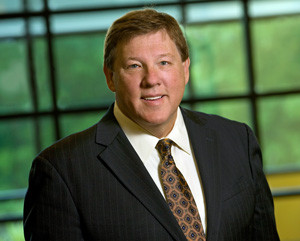
In launching our Efficient Electrification Initiative, EPRI defined a contrast between the original meaning of electrification and the meaning that best fits developed economies in the 21st century.
“Electrification” initially pointed to the extension of electrical service to people who lacked it. In the United States, the federal government established the Rural Electrification Administration to bring electricity to rural residents and farms through the creation of rural electricity cooperative companies and the construction of power generation and distribution systems.
In the 1930s, only 10% of rural dwellers had electric service, and 9 of 10 farms likewise were power-less. By 1945, that had been reversed with an estimated 9 out of 10 farms electrified.
In moving electrification beyond the basic (and binary) question of haves and have-nots, Efficient Electrification looks to an Integrated Energy Network to help achieve the most efficient use of energy, the cleanest production, delivery and use of that energy, and measureable benefits to consumers, workers, drivers, and others.
Today, where the modern grid is poised for fundamental change, the original binary question gives way to a matrix of questions and overlapping or intersecting answers. When EPRI rolled out its U.S. National Electrification Assessment on April 3 at the National Press Club in Washington, D.C., this was made apparent in key findings such as these:
Electricity’s share of final energy consumption can be expected to grow from 21% today to 32–47% in 2050. Transportation accounts for a large share of this growth, both for personal vehicles and for commercial truck fleets and other heavier duty applications. Beyond that, we’re looking at advanced heat pumps, industrial process equipment, and other technologies. The analysis directs our thinking to regulatory and economic barriers and points to opportunities for financing. (Think of how rural electrification financing made possible electric milking machines, dramatically increasing the production of dairy farms. For the 21st century, we are looking closely at indoor agriculture, in which electrified crop production can sharply reduce consumption of water and other resources.)
EPRI’s analysis points to one fact that may surprise some readers. Even as the use of electricity increases, the overall final use of energy decreases. That’s fundamental to EPRI’s pairing of “Efficient” with “Electrification.”
This is why the conversation is changing. The energy system overall becomes more efficient through efficient electrotechnologies. (Read an interview with Joe Stagner about how electrifying helped Stanford University improve its overall energy efficiency by 50%.) It becomes cleaner at the point of use as the entire system becomes cleaner and as we use less energy to do the same work. (Edison CEO Pedro Pizarro spoke with EPRI Journal about his company’s plan to reduce greenhouse gas emissions and air pollution in California through electrification.) The entire system becomes more dynamic, too. As more uses rely on electricity, grid operators have more resources to manage and draw upon as they balance supply- and demand-side resources, taking advantage of a more interconnected system.
At the National Press Club event in April, we were joined on the podium by three members of the EPRI Board of Directors in a panel discussion about the National Electrification Assessment and Efficient Electrification. While I encourage you to watch the discussion, I offer these quotes from the panel to show how the conversation is changing.
Jeff Lyash, Chairman, President, and CEO of Ontario Power Generation, offered these points: “[In Ontario] we’ve essentially already decarbonized the electricity sector…. We’re at 40 grams of carbon per kilowatt-hour…. And so what we’re turning our attention to is exactly this: how do we take this clean electricity and drive decarbonization in mobility, in space heating, and in industrial processes?”
Sheryl Carter, Director, Power Sector, Natural Resources Defense Council (NRDC), said this: “…electrification has become a really important part not only of NRDC’s advocacy but other environmental groups as well because of the environmental and public health benefits that [it] can bring. The ways that we’re addressing this issue include working to make sure that we are making these efficient choices across the energy system, across the economywide energy system—instead of just looking at one sector versus another, like electricity, natural gas, petroleum. That’s really important.”
Pat Vincent-Collawn, Chief Executive Officer and President, PNM Resources, Inc: “We [the utilities] are the ones in the middle that can help look at it from a systems perspective, because if we don’t… we’ll have unintended consequences…. Think about cyber security, for example. We’re going to have all sorts of things plugging into the grid and the network. We need somebody that makes sure people are up to cyber security standards as more and more stuff gets plugged into our grid. I think we also need to make sure that we involve our friends in the water and natural gas industries to think, again, about the systems approach.”
It becomes apparent that the Integrated Grid’s dynamic mix of traditional, renewable, and distributed resources, is integral to the Integrated Energy Network, which comprehensively considers electricity, natural gas and other resources. In that framework, electrification can provide improved efficiency across the board. EPRI is conducting analyses at the state level to bring more details and insights to the discussion. But one point is clear: The conversation is broadening to include more technology, more systems, and more participants.
Based on everything we’re hearing at EPRI, I see also a common theme of optimism that we can realize significant gains in overall efficiency, sustainability, service, and customer satisfaction. Clearly the conversation is focused on progress across the board.
Mike Howard

President and Chief Executive Officer, EPRI


